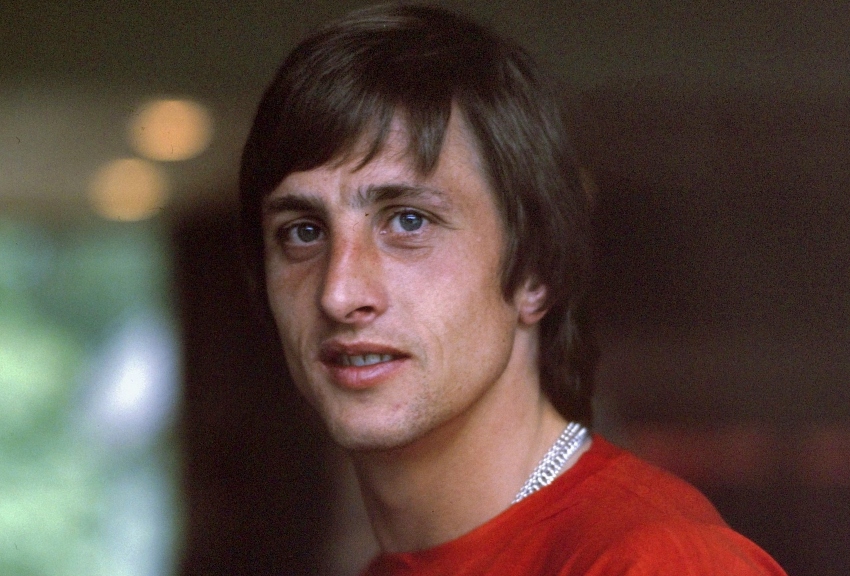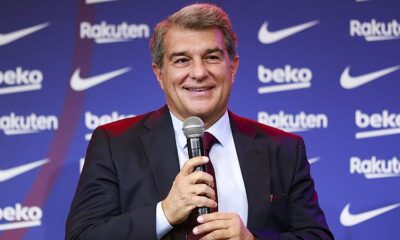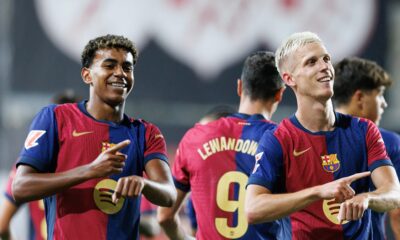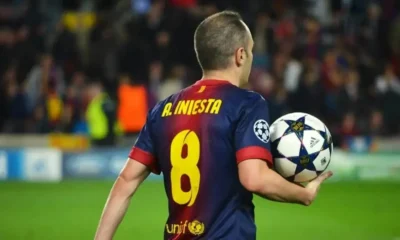Football
Interesting facts from the life of Johan Cruyff, the great football pioneer
Johan Cruyff is one of the most famous men from the world of football ever. A name that is often known even by people to whom this wonderful sport means nothing. Few have managed to influence people’s understanding of football as much as he has.

Johan Cruyff is one of the most famous men from the world of football ever. A name that is often known even by people to whom this wonderful sport means nothing. Few have managed to influence people’s understanding of football as much as he has. Without his style of play, there would be no players like Guardiola, Wenger, Cantona or Messi. Cruyff was not only a player but a coach, a teacher and his philosophy of football is now legendary. What was he really like and how did he specifically influence modern football?
Johan Cruyff was born on 25 April 1947 in Amsterdam. The neighbourhood where he grew up was called the concrete village, and as the name suggests, it was a working-class neighbourhood. The conditions for playing football were poor, yet little Johan spent most of his time outdoors running after the ball.
As Cruyff writes in his autobiography, thanks to the difficult conditions he learned to use the obstacles and disadvantages of the terrain to his advantage. “Thanks to the different surfaces, on which the ball often bounced unpredictably, I learned to react instantly, and so I honed my technique.”
His parents owned a shop in Betondorp, a few hundred metres from the De Meer stadium where Ajax Amsterdam played. His father regularly went to every game, so little Cruyff gravitated towards football from a young age.
He was five years old when he first stepped onto the Ajax pitch. His father was then delivering fruit baskets to players who were sick or injured. That’s when Cruyff met Henk Angel, who was working as a caretaker at Ajax, and he offered to help him. That was Johan’s first glimpse into the world of football.
“People often ask me what my fondest football memory is. To be honest, I don’t remember too many details. Not even my first goal for Ajax in their home stadium. What I do remember is the moment when I first stepped onto the pitch in front of the packed stands. Not as a player, but I went with a pitchfork to aerate the sixteen.”
Little Cruyff reportedly spent most of his time on the field, sometimes even playing in games when the team was missing a player or when the coach left him out. When he was ten years old, Johan officially joined the Ajax academy. It was then that he first met coach Rinus Michels, who became his role model and had a major influence on Cruyff’s understanding of football and his career.
As a kid, he reportedly hated endurance running and weight training with a medicimbal, probably because Cruyff was very thin and sinewy from a young age, and so he was not very good at weight training and did not enjoy it.
In addition, he met people like Jeroen van der Veen and coach Vic Buckingham, under whom Cruyff made his A-team debut on 15 November 1964. In his first match against Groningen he even managed to score a goal, yet Ajax lost 3-1.
Rinus Michels soon took over the team. He was the one who influenced Cruyff the most and based on what Cruyff learned from him, he built his philosophy.
“Defence is about giving the opponent as little time as possible. When you have the ball, you should make sure you have as much space as possible, and when you lose the ball, you have to minimize the space your opponent operates on.”
Cruyff spent a total of sixteen years at Ajax, during which time he not only won the title six times, the Dutch Cup four times, the European Champions Cup three times (equivalent to today’s Champions League), but more importantly, he grew incredibly as a footballer and became a club legend.
In 1971, he helped Ajax to their maiden European Champions Cup victory, beating Panathinaikos 2-1 in the final. A year later, Ajax triumphed in the final again, this time against Inter Milan. It is this triumph that Cruyff values the most, because Ajax really showed the power of total football then.
Many people still remember Cruyff’s goal in the net of ADO den Haag, the so-called “curved goal”, or probably the even more famous trick called the Cruyff turn. Cruyff himself said of these tricks: ” I didn’t plan them, they just came to me and only became important later.”
During his time in the Dutch capital, Cruyff was also called up to the Dutch national football team for the first time. In his rich career, he made 48 national team starts, during which he scored a total of 33 goals.
In 1974, Rinus Michels became the national team coach and, as at Ajax, he introduced a philosophy called total football.
“From then on, individuals were to behave as an organised unit on the pitch and those who didn’t like it were a hindrance to the others. Apart from the quality of the players, this system is mainly a question of their spacing and positioning on the pitch. If the players are in the right spacing and formation, everything falls into place,” says Michels.
Their joint efforts have borne fruit. In 1974, the Netherlands finished second at the World Cup, and two years later, third at the European Championships.
Johan Cruyff in Barcelona
In 1973, Johan left for Barcelona because of disagreements at Ajax, where the management was not working and there was some dissension among the players. Officials started meddling in the club’s transfers and Cruyff therefore decided it was best to leave the club. However, despite his unfortunate departure, Ajax remained his number one club.
“At Ajax I felt unwanted and insecure, if a club like Barcelona wants you in these circumstances you should think about it. Especially when the transfer fee will be the highest in history.”
Along with him, Rinus Michels also moved to the Catalan capital. Cruyff did well in Spain too. In five years with the club, he managed to win the title and the Spanish Cup. Unfortunately, this engagement was not without its problems. Spain was ruled by General Franco at the time, and the club’s management was headed by the Catalan nationalist Armando Carabén, who used him to promote an independent Catalonia.
“I’m a man from Amsterdam who tells it like it is, but in Spain, during General Franco’s regime, that wasn’t the norm.”
After five years, Johan decided to move to America, where he got to know the sport from a slightly different side. First of all, they are used to playing on artificial grass. Secondly, the Americans have an excellent transition between youth and professional football. Cruyff himself has mentioned several times that he admires the way things work in America.
“Practically in university, the sport is taken very seriously. If you’re good, you get a scholarship from the university. Plus, after a while, a professional club will look you up and you can start playing straight away.
Cruyff’s football philosophy
“Playing football is very simple. But playing simple football is one of the hardest things in the world.”
This is just one of his many quotes that can be used to illustrate Cruyff’s philosophy called total football. And what exactly is it that makes this doctrine so interesting? Let’s take a look.
The opponent has the ball in his own half. Our strikers and midfielders therefore move into the opponents’ half and try to condense the playing space as much as possible. They’re actively attacking the opponent, which eventually leads to a misplaced ball and we get the ball.
We’re in the transition phase. Players have to find open spaces on the field. For example, if a midfielder gets into trouble and has nowhere to pass, a defender automatically runs into the open space and another midfielder temporarily takes over.
With quick passes and effective runs, we eventually get forward to the goal, and the finish comes. Because players change positions during the game, almost anyone can get to the end, so it is important that players can play multiple positions. This is why versatile players are highly valued for this style of play.
The tactics are based on spacing between the lines, with the goalkeeper also being one of them. Therefore, he must be able to receive the pass and play the whole action.
This was just a small sample of a style of play called total football. I hope I’ve been able to outline a little of how it works.
I set out to give people an insight into the life of Johann Cruyff, an amazing footballer but also a great man who had a huge influence on modern football.
Few people have been able to make history in this amazing sport the way he did. A large number of football tactics today are still based on his teachings and elements of his philosophy are clearly visible in the play of many teams today.
Source: Johan Cruyff and Jaap de Groot:: My philosophy of football, Wikipedia










